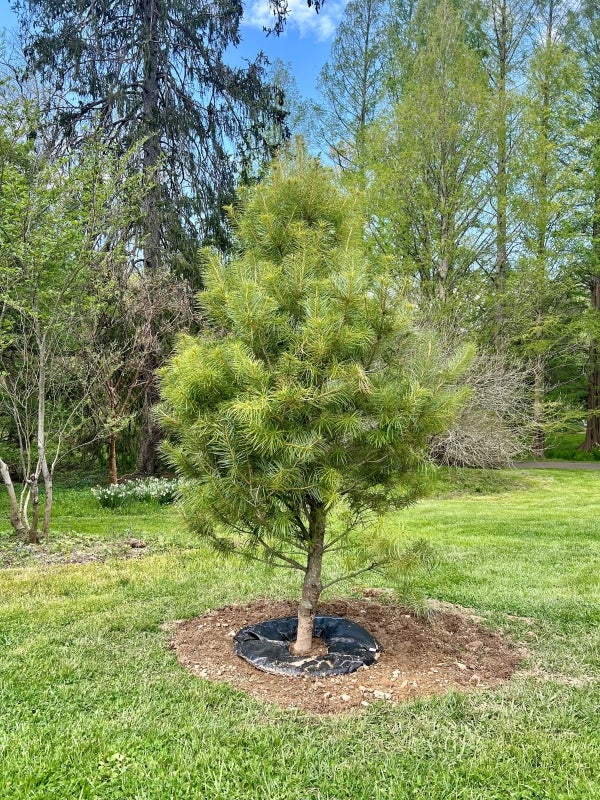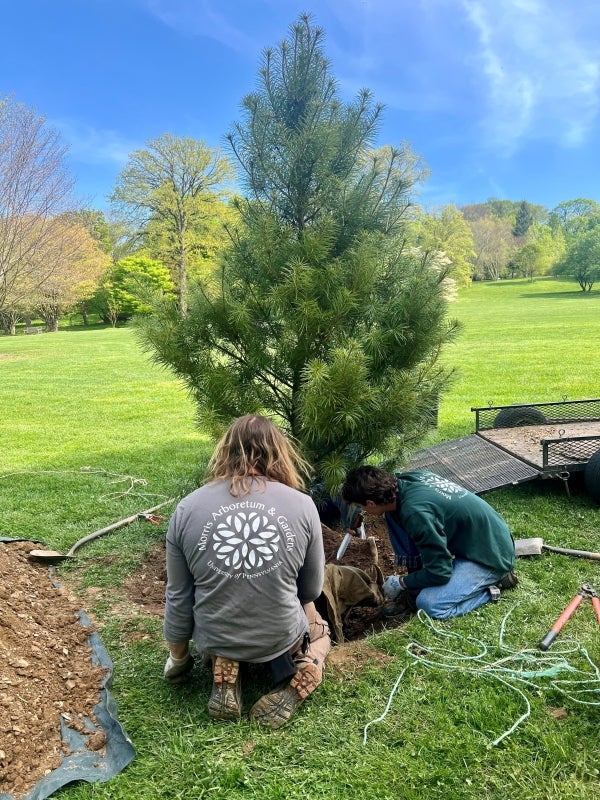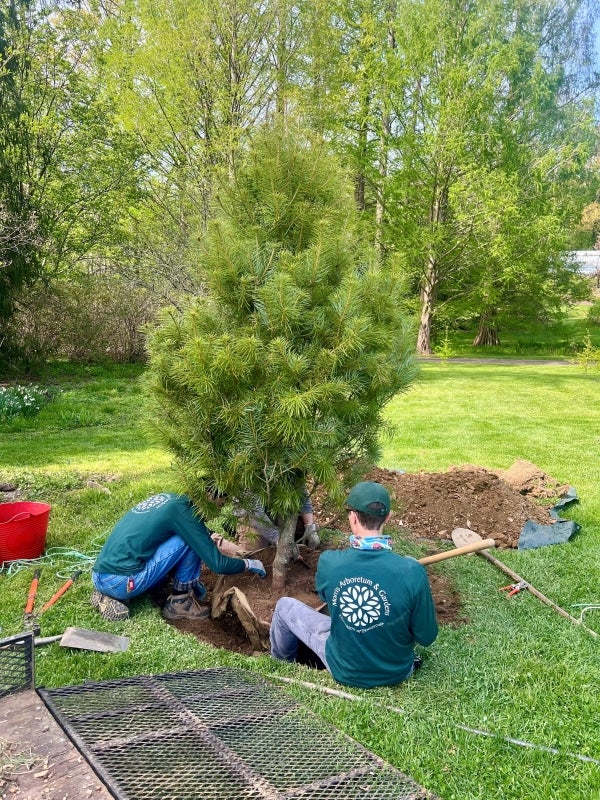Blog



The Morris possesses a collection of trees and shrubs that encompass everything from the exotic to the common, the ornamental to the esoteric. This spring we were fortunate to add another extremely rare plant to our collection. The Cathay silver fir, Cathaya argyrophylla, is an ancient member of the pine family, and a “living fossil.” It first appeared in fossil records around 140 million years ago during the Cretaceous period of the late Mesozoic Era. It was a contemporary of the dinosaurs that roamed the earth during this same time. The Cathay silver fir was thought to be as extinct as the dinosaurs who ate it.
In 1938, Professor Yang Hsien-chin from Fudan University was doing fieldwork on the remote Golden Buddha Mountain in southeastern China when he discovered an unknown conifer. He took herbarium specimens from his mysterious find back to his lab for further study. Unfortunately, due to a variety of factors (not the least of which was the outbreak of a global war), his herbarium voucher sat uninvestigated. In 1949, the newly installed Chinese Communist Party created the Institute of Botany and folded Professor Yang’s specimen into a national herbarium collection. Here his herbarium vouchers languished in further obscurity as an unidentified tree.
In the summer of 1955, in another remote forest near the Golden Buddha Mountain, several Chinese botanists discovered conifers they did not recognize. They sent specimens of these plants to the Institute of Botany. Using Professor Yang’s herbarium specimens, these plants were identified as further examples of Yang’s unknown conifer. With this information, a new plant was named: Cathaya argyrophylla. Cathay silver fir turns out to be an incredibly ancient conifer and may have the oldest plant lineage among evergreen conifers. From a genealogical perspective, the Cathay silver fir may be the progenitor of all modern-day pines and spruces. DNA evidence suggests that pine trees evolved from C. argyrophylla.
Fossil records of C. argyrophylla appear throughout Asia, Europe, North America, and were a staple of the boreal forests that covered the northern hemisphere. Inexplicably, a plant that enjoyed such a wide distribution in the past had been reduced to a handful of disjunct natural populations—all in remote, inaccessible areas in southern China. In a conservation study done in 2012, it was determined that less than 4000 mature plants exist in the wild. Additionally, all these disjunct populations were in a single geographic area. Thus, the conservation status of C. argyrophylla is listed as vulnerable. Because of its precarious position in the wild, C. argyrophylla has been dubbed the “giant panda of the plant kingdom.” Part of the problem is that most trees in the wild are mature trees in decline. There is limited seedling recruitment due to a variety of factors. In the Cretaceous period, dinosaur browsing was one of the biggest threats to C. argyrophylla. Today, the tiny simao pine moth caterpillar is wreaking havoc on this tree. A single caterpillar can devour thirty leaves per day and can kill young seedlings. In another recent survey of a C. argyrophylla reserve, only seventeen seedlings were found!


The Cathay silver fir has been given protected legal status by the Chinese government and access to the natural populations and distribution of this plant is tightly regulated. Despite these efforts, this tree is still imperiled. Illegal logging has been a threat in the past. The wood of mature trees is of high quality and valuable, and if park officers lose control, it is possible that wild C. argyrophylla populations could become endangered.
Additionally, with small, isolated clusters of Cathay silver fir occurring in a limited geographic area, the ravages of one wildfire or mudslide can wipe out an entire population. We are still learning about the hardiness and soil preferences of C. argyrophylla. Its natural range is limited, and due to the extreme pressures of habitat loss it is only found in difficult to reach gravelly screes, cliff faces, and remote plateaus. Many of these areas are calciferous in nature; however, the Cathay silver fir has shown that it can also grow in average, neutral soil in cultivation. It is considered cold hardy into USDA zone 7.
Seed of Cathay silver fir was distributed from China in 1991, and our plant comes to us through the efforts of conservation groups interested in securing the future of plants in peril. It is thanks to the efforts of the Chinese government and the botanical garden community that Cathaya argyrphylla is being propagated and distributed to preserve this plant in ex-situ collections, like ours here at the Morris Arboretum & Gardens.